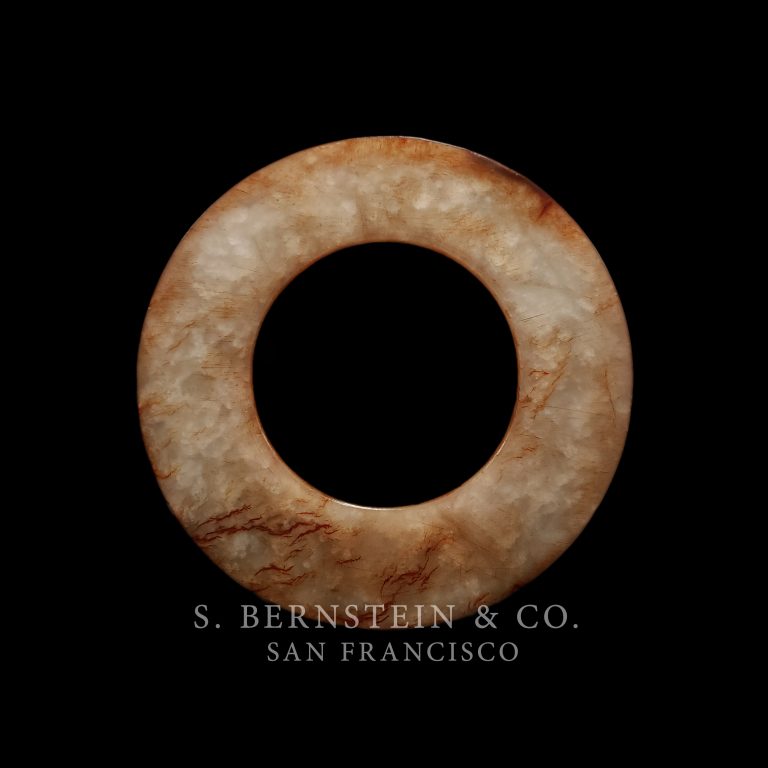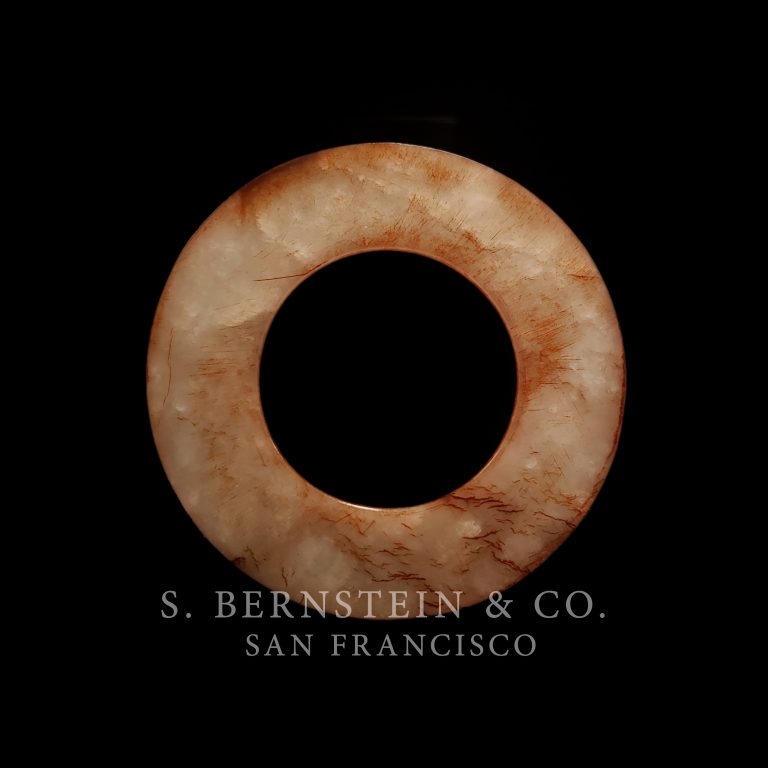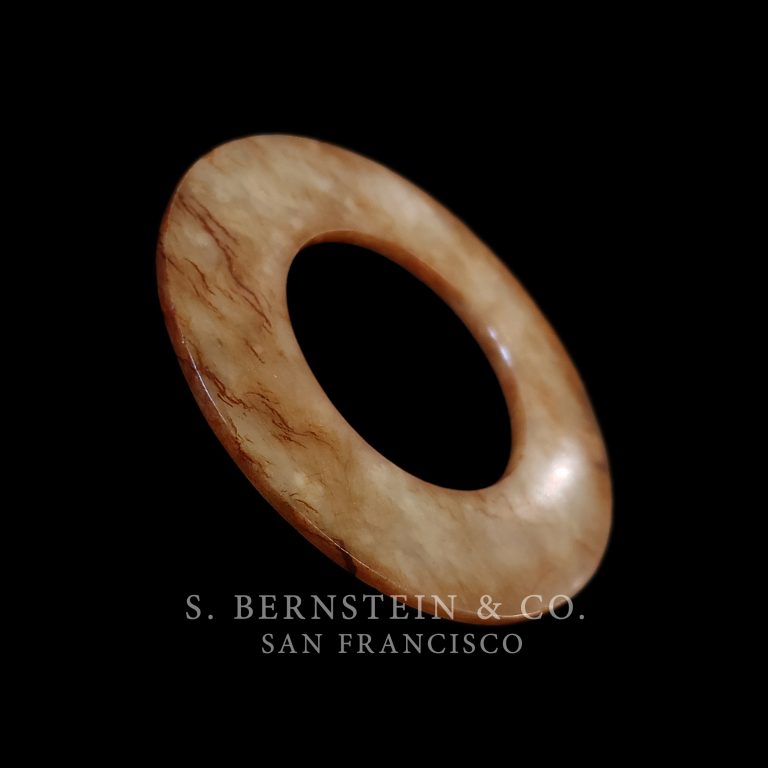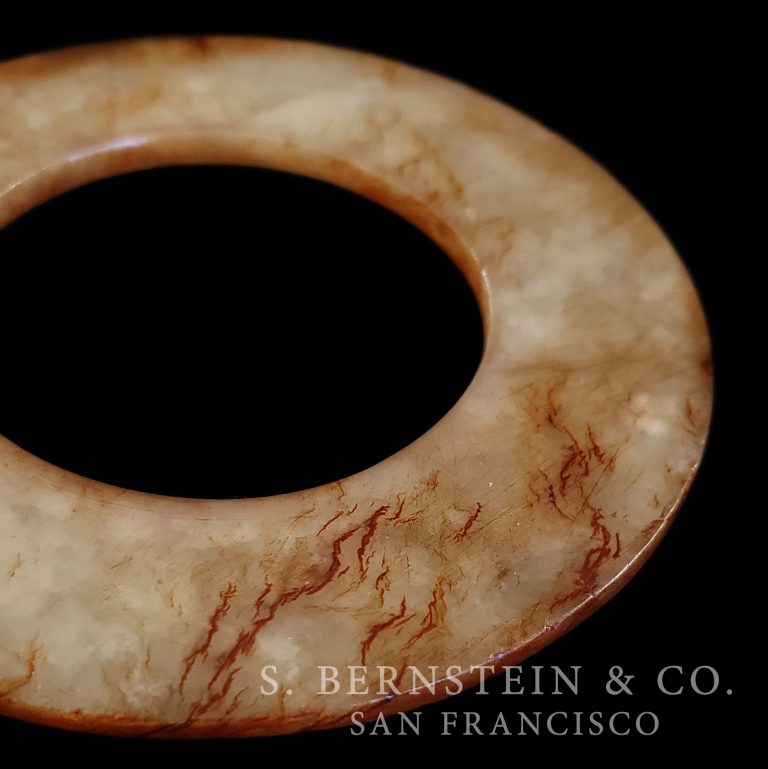



Reddish-brown Nephrite Jade
Western Zhou Period (西周), 1100-800 BCE
Diameter: 12.7 cm
This yuan bi disc is a significant example of prestige jades of the Western Zhou period. Archaeological evidence suggests that the motif has its origin in personal ornaments as early as the late Neolithic period. Similar discs were incorporated into long necklaces consisting of beads and discs worn around the neck, extending to below the waist. The yuan bi disc was to become one of the most enduring forms in Chinese art.
Working jade was an extremely slow and laborious process. Such technologically and artistically sophisticated objects may have been commissioned and used solely by members of the elite class, serving as visual expressions of their prestige and authority. From the complexity of Western Zhou rituals and artifacts, archaeologists have concluded that this culture developed a highly stratified society, with division of labor and advanced administration over resources. Early social elites would evolve in later periods into regional kings, and eventually, emperors.
Excavations at Western Zhou sites have yielded numbers of jades, however it must be noted that they are found only at selected, elite burial sites. This ritual custom suggests that the intention was to bury jades used during the occupant’s lifetime to protect the occupant and contents of the tomb in the afterlife. For example, a comparable jade yuan bi disc approximately 15 cm diameter from the Western Zhou period during the reign of King Xuan (827-782 BC) was unearthed at the Guo State Cemetery, Shangcunling, Sanmenxia City, Henan Province in 1994. We note that the coloration of the jade material and the natural inclusions present in the stone are consistent with other jades of the period.
This fine yuan bi disc is rendered from mottled cream and pale brown nephrite jade. There are amber and dark brown inclusions running throughout the piece. In our opinion, the subject matter, workmanship and design are consistent with a Western Zhou jade date for this work of art.
Reference number 2949
Price Available Upon Request
Exhibited & Published: Pacific Asia Museum, Santa Ana California, 1986, Cat. Illus. #9
Exhibited & Published: Dayton Art Institute, Dayton , Ohio, January 1989, #2
Exhibited & Published: “Ritual and Power, Jades of Ancient China” China Institute of America, Catalogue #14. 1988
Exhibited: “Reverence of a Stone,” San Antonio Museum of Art, 1986
Published: “Highlights of the Gerald Godfrey Jade Collection”,
Arts of Asia July-August 1990, Fig. 2
A comparable jade yuan bi disc approximately 15 cm diameter from the Western Zhou period during the reign of King Xuan (827-782 BC) was unearthed at the Guo State Cemetery, Shangcunling, Sanmenxia City, Henan Province in 1994. We note that the coloration is similar and that there are natural inclusions in the nephrite jade which are consistent with other jades of the period.
For an example of a Yuan disc of the Han period excavated from the Tomb of the Western King of Nanyue, see the diagram illustrating its use incorporated in a necklace in “Jades from the Tomb of the King of Nanyue”, Page 31, Fig.12.
A smaller white jade yuan bi disc four inches in diameter from the Robert H. Ellsworth collection dated to the Western Zhou period sold at Christie’s New York, March 19, 2015, Lot 560.
To inquire about this work of art, contact us at 415.299.1600 or email at sbernsteinjade@aol.com
